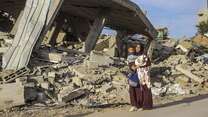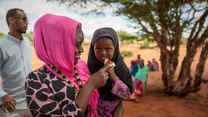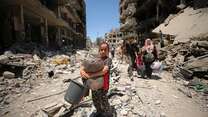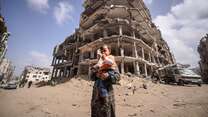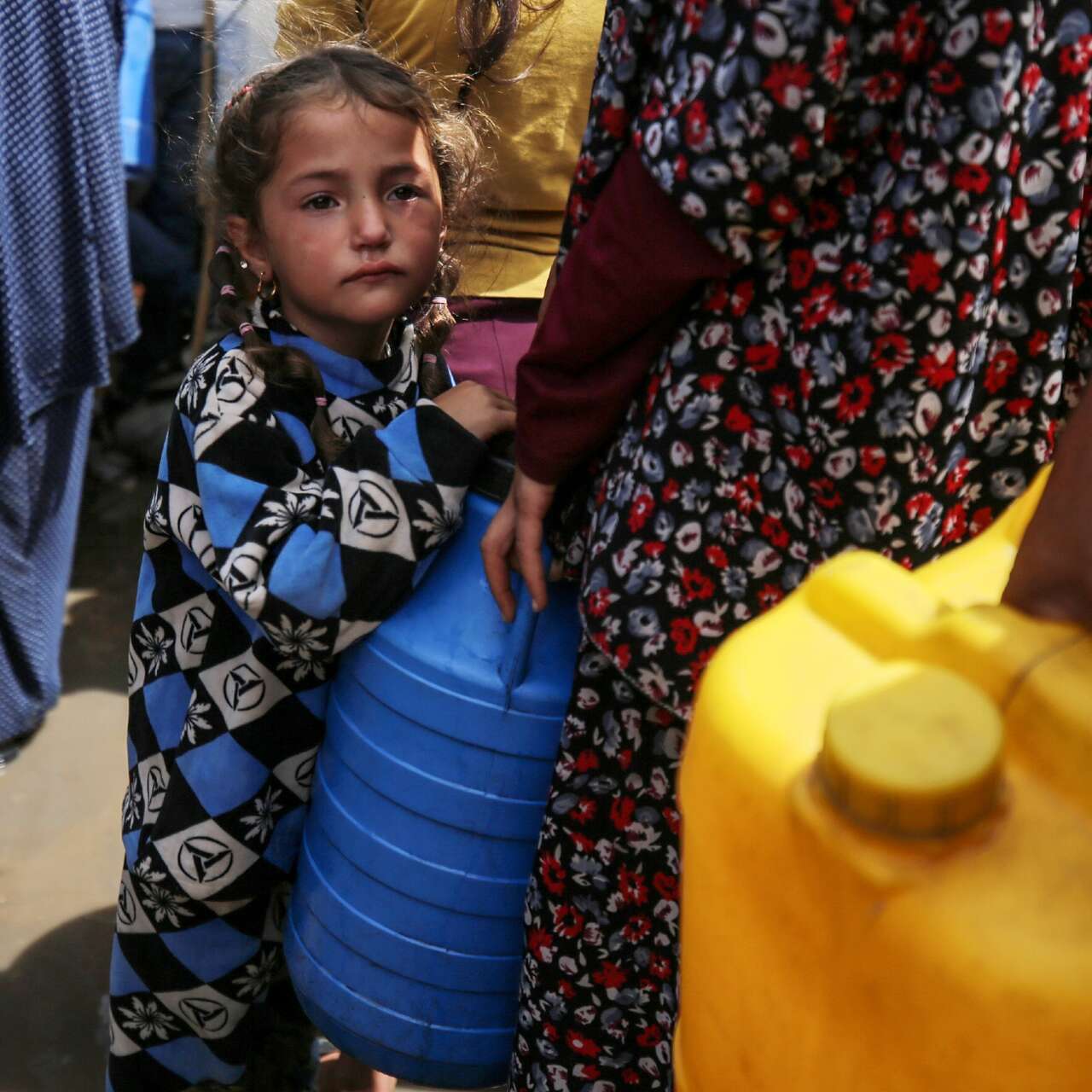
EDITOR’S NOTE: This article was last updated on September 11, 2025. Please refer to our explainer article for the latest updates on the crisis in Gaza.
Huda Abed Maarouf will never forget the moment when airstrikes forced her and her three young children from their home. The 25-year-old mother had to evacuate her family alone, her husband trapped far away in the south.
"My feelings were intense. I had my three children with me. I didn't know whether to carry them or their belongings," she shares. "The situation was very difficult."
With baby Farah still an infant and her two other children under six, Huda made the only choice possible: she grabbed her children and ran. What followed were months of displacement and hunger. Farah watched as her seven-month-old daughter wasted away from severe malnutrition, eventually losing the ability to sit up.
Huda's story is playing out across Gaza, where families wake each day searching desperately for food and finding nothing. Her experience illustrates a critical truth about places on the brink of famine: by the time the situation makes international headlines—as is happening in Gaza and Sudan—and certainly by the time famine is declared, thousands of people have died.
All thresholds of famine—catastrophic hunger, acute malnutrition, and mass death—have officially been surpassed in Gaza City. By the time famine conditions have been met, it is already too late for too many. It’s not the start of a crisis but proof that preventable tragedies have already taken place.
The difference between action and inaction can mean the difference between life and death for millions of vulnerable people in Gaza.
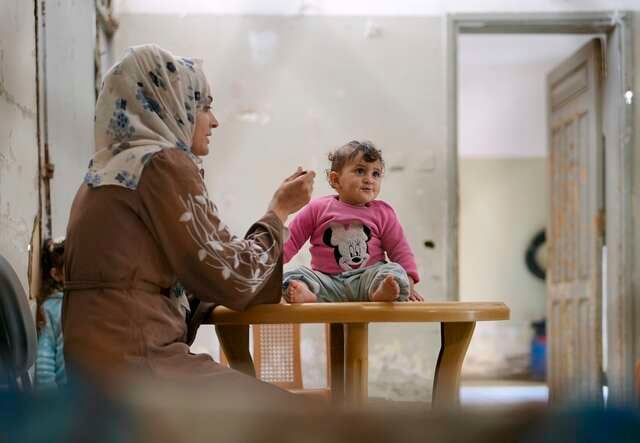
Understanding famine
Famine doesn’t simply refer to severe hunger—it is at the extreme end of a scientific scale with clear thresholds designed to measure food insecurity and malnutrition.
Famines are classified by the Integrated Food Security Phase Classification (IPC), an internationally-recognized initiative that brings together governments, regional bodies and international agencies, to scale and assess food insecurity and malnutrition crises globally.
To be classified as a famine by the IPC, three critical criteria must be met:
- At least 20% of households face extreme food shortages
- Acute malnutrition rates in children are 30% or higher
- Mortality rate of over 2 deaths per 10,000 people per day because of starvation or the interaction between malnutrition and disease.
All of these conditions have been met in Gaza City.
When famine conditions have been met people have already starved to death. During the devastating drought in Somalia in 2011, over 250,000 people had already died of starvation when famine was officially declared.
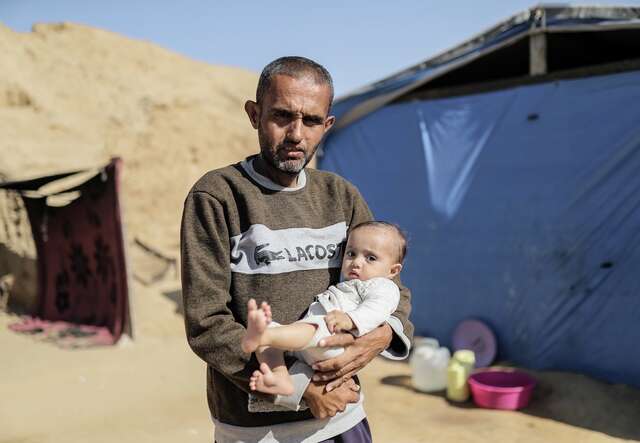
The five-phase food security classification system
Food security exists on a spectrum, measured through the Integrated Food Security Phase Classification (IPC) system. This system has five tiers, with famine representing the most devastating categorization:
Phase 1: None/Minimal
Households are able to meet essential food and non-food needs without engaging in atypical and unsustainable strategies to access food and income.
Phase 2: Stressed
Households have minimally adequate food consumption but are unable to afford some essential non-food expenditures without engaging in stress-coping strategies.
Phase 3: Crisis
Households either:
- Have food consumption gaps that are reflected by high or above-usual acute malnutrition; or
- Are marginally able to meet minimum food needs but only by depleting essential livelihood assets or through crisis-coping strategies.
Phase 4: Emergency
Households either:
• Have large food consumption gaps which are reflected in very high acute malnutrition and excess mortality; or
• Are able to mitigate large food consumption gaps but only by employing emergency livelihood strategies and asset liquidation.
Phase 5: Catastrophe/Famine
Households have an extreme lack of food and/or other basic needs even after full employment of coping strategies. Starvation, death, destitution and extremely critical acute malnutrition levels are evident. For Famine Classification, an area needs to have extreme critical levels of acute malnutrition and mortality.
The critical insight: Intervention during Phases 2-3 can prevent the catastrophic outcomes of Phases 4-5. Once famine is declared, it's already too late for thousands of people.
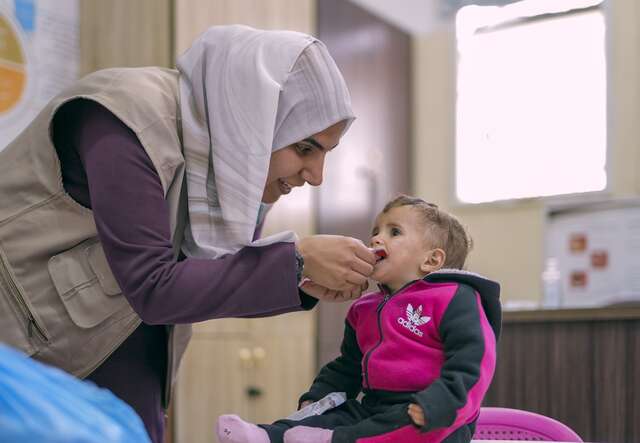
What does famine look like in Gaza?
Every day, Palestinians are being pushed to the brink of survival, struggling to secure basic necessities like food, clean water, and essential medical care. This stark reality underscores how quickly food security collapses when humanitarian access is restricted and how political barriers, rather than logistical limitations, determine the fate of those in need.
According to an IRC assessment in April in Deir al Balah, Gaza City and North Gaza, nearly three in five families report being unable to find bread or fresh food, while over 60% struggle to access safe drinking water. On the ground, IRC staff witness heartbreaking scenes: Families forced to share a single piece of bread among five or six members, and children regularly going to bed hungry.
David Miliband, President and CEO for the International Rescue Committee (IRC), says, "Children in Gaza are not just hungry; they are starving to death. IRC staff and our Palestinian partners are exhausted, delivering nutrition, health, and water and sanitation — all while facing the same hunger and relentless threats to their lives and that of their families..”
“Without immediate, unhindered humanitarian access and a ceasefire, more lives will be lost to starvation and disease. This is not a natural disaster, it is a man-made catastrophe, unfolding in full view of the world and entirely preventable.”
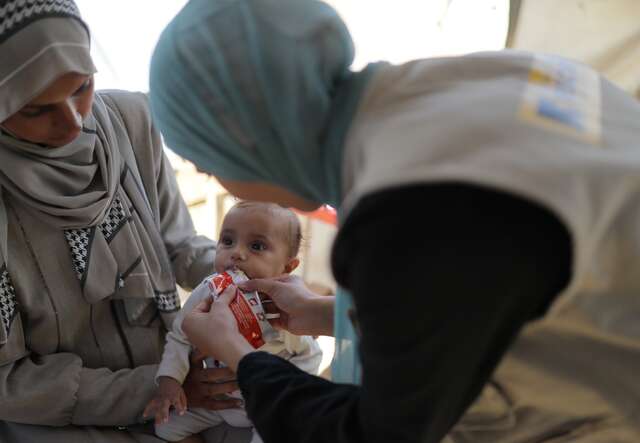
How Gaza went from hunger to famine
Since May, the Government of Israel has imposed a near-total blockade on aid flows, denying the population of Gaza access to food, water and medical care. Now, families are starving, children are wasting away from severe acute malnutrition, and people are dying.
Tragically, the crisis has claimed the lives of thousands of people from starvation-related causes, with children making up the majority of these preventable deaths.
For families like Huda's, the consequences are immediate and life-threatening. Baby Farah's condition became critical—at seven months old, she required urgent treatment for severe acute malnutrition. With local medical facilities bombed and destroyed, Huda had to walk to central Gaza to reach an IRC-supported clinic.
"I remember the first time I went to the medical facility that is supported by the IRC. I was very satisfied and happy because I had finally found an organization that cares for my daughters and children and which takes care of their health," Huda says.
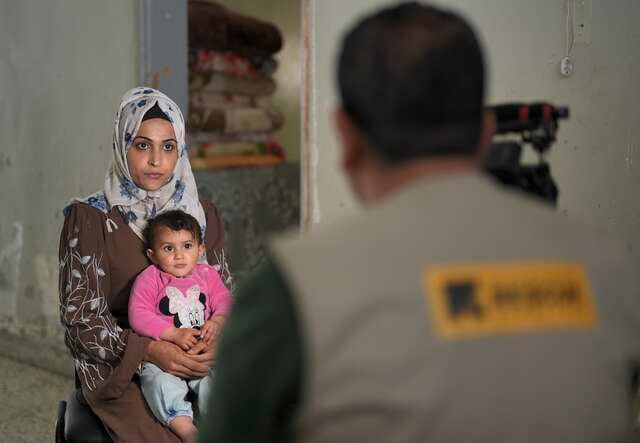
What needs to happen now in Gaza?
The confirmation of famine in Gaza demands immediate action, and the window to prevent further catastrophic loss of life is rapidly closing. The IRC emphasizes that "only full, safe, and sustained humanitarian access granted immediately—through land routes, at scale—can avert a catastrophic loss of life."
Current relief efforts are wholly inadequate. "Airdrops and brief humanitarian pauses offer only symbolic relief and cannot meet the scale or urgency of need," the IRC warns. The restrictions on aid that have created these famine conditions must be removed immediately to allow for the massive scale-up in assistance that the situation demands.
The humanitarian community is calling for immediate access to flood Gaza with aid. With some families reported to be surviving on lentil water and wild herbs, and children too weak to seek help as their bodies shut down from lack of food, there is no time for delays or half-measures.
How is the IRC helping
Despite soaring costs of local goods and a near-total blockade and severe fuel shortages that are compounding the challenges of aid delivery, the IRC continues to deliver nutrition, clean water, sanitation and hygiene services, along with child protection in some of the hardest-hit areas of Gaza.
The IRC has 5 tons of life saving medical stock ready and waiting to enter Gaza, which can treat thousands of people and offer critical support to a health system already collapsing. Yet with Israel's current almost total blockade on access into Gaza, it remains uncertain as to when we will be able to deliver these supplies. This is at a time when already overstretched medical facilities are struggling to cope with this latest escalation in the conflict and there are no fully functioning hospitals across the strip.
Essential services in Gaza are also at risk. Despite the volatile situation, the IRC has been able to continue offering vital nutrition, child protection, health and hygiene services, with the support of our Palestinian partners.
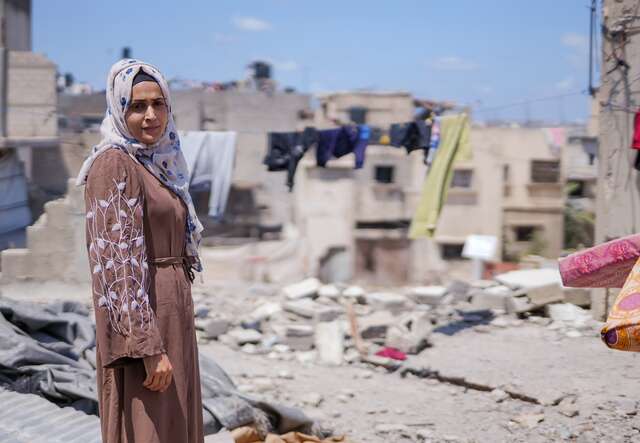
How to help Gaza
Donate: Despite restrictions on aid delivery, the IRC continues to reach Palestinians with lifesaving health care, cash, and emergency support. Your donation today can help deliver critical aid where it's needed most.
$80 can provide medical care for a malnourished child throughout the course of treatment.
$250 can provide a family with the most essential necessities for survival for a month.
Share stories like Huda's: Help ensure that human stories reach decision-makers before statistics become headlines. Personal accounts create the political pressure needed for early action.
The International Rescue Committee works in over 40 countries and territories to help people whose lives and livelihoods are shattered by conflict and disaster. Learn more about our emergency response work and how you can make a difference.
Today, Huda has returned to her destroyed home in southern Gaza. "All the walls of my house have been destroyed. All the windows have been shattered. The roof has collapsed. I do not feel safe," she says. Yet despite the ongoing dangers, she holds onto hope for peace and the chance to rebuild—hope that her story represents not just survival, but the possibility of prevention for countless other families facing similar crises around the world.
Stay connected: Follow the latest from the IRC and share posts from our Instagram, LinkedIn, Facebook, Bluesky and X accounts with your network.
Read more about the top 10 crises the world can’t ignore in 2025 and learn more about the IRC's 2025 Emergency Watchlist.
